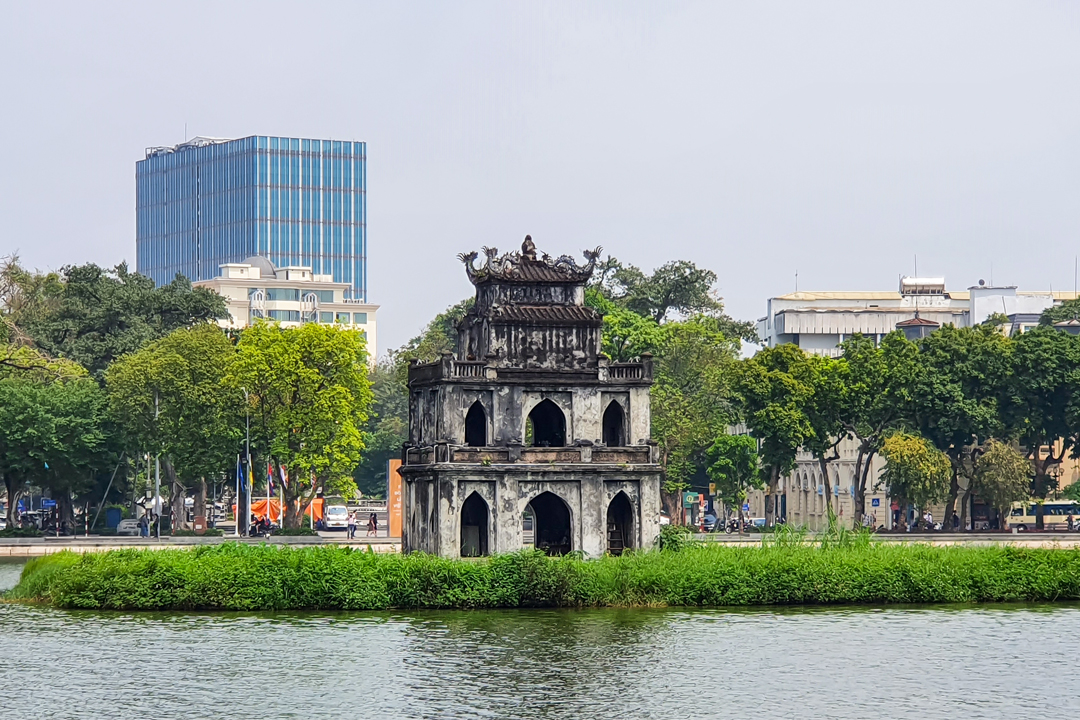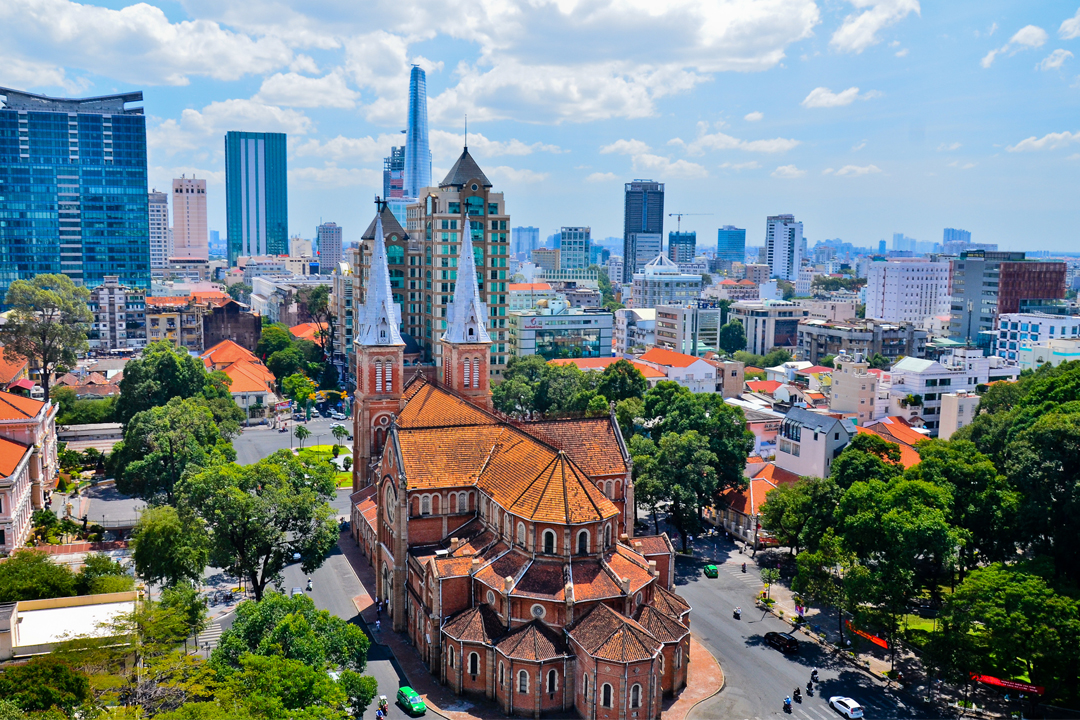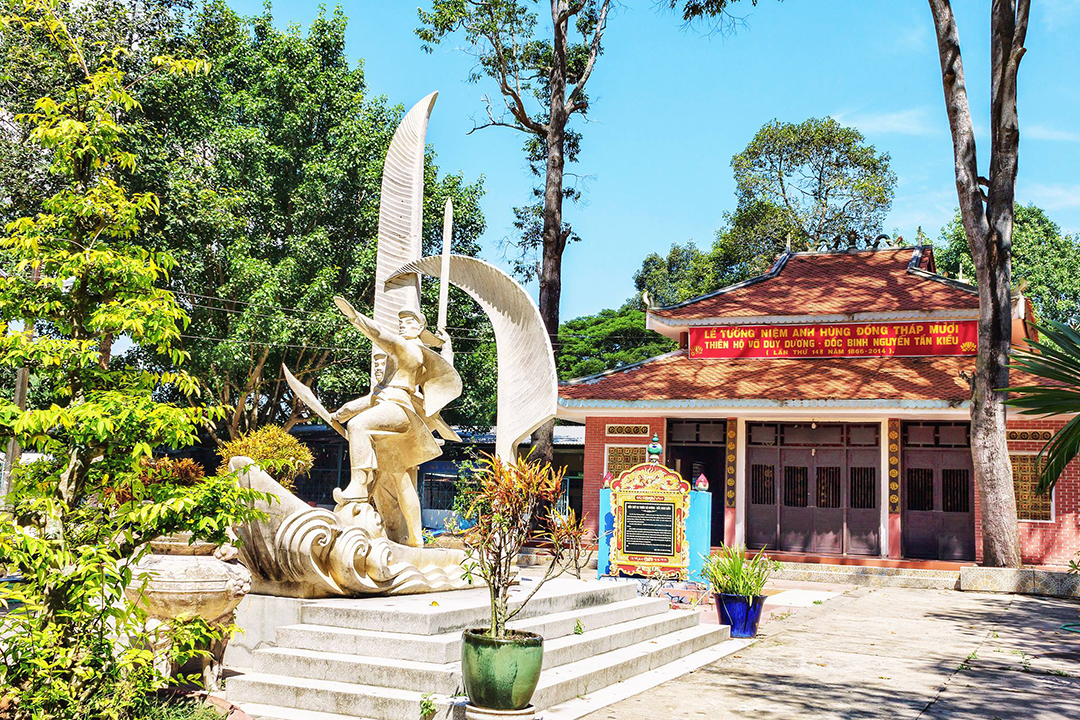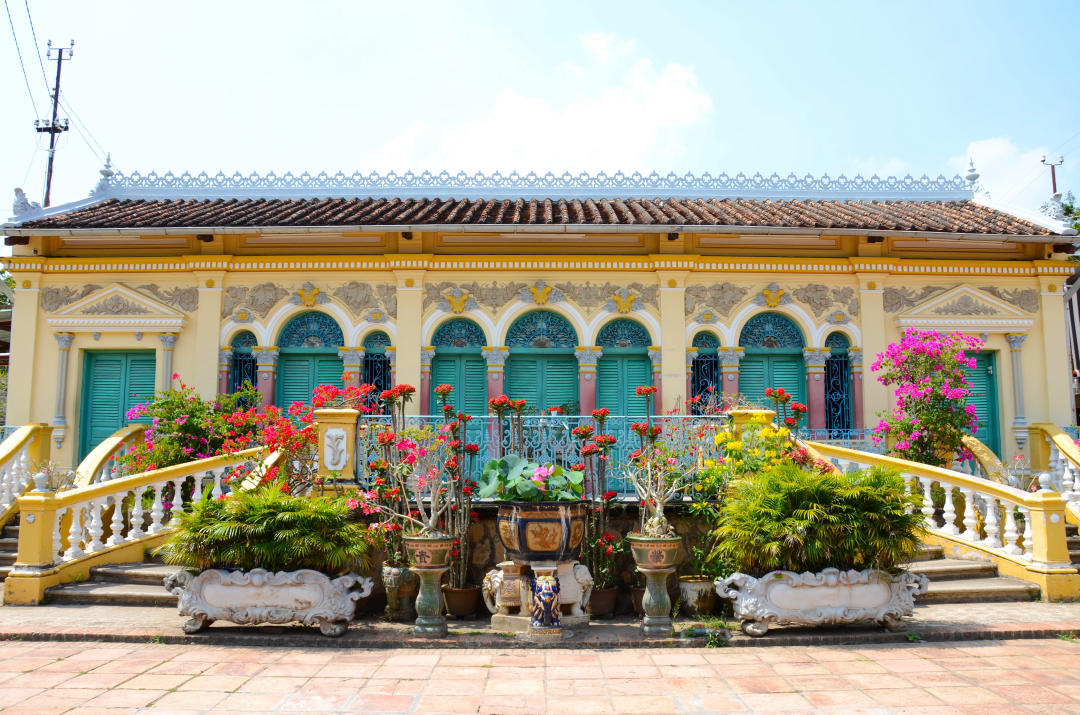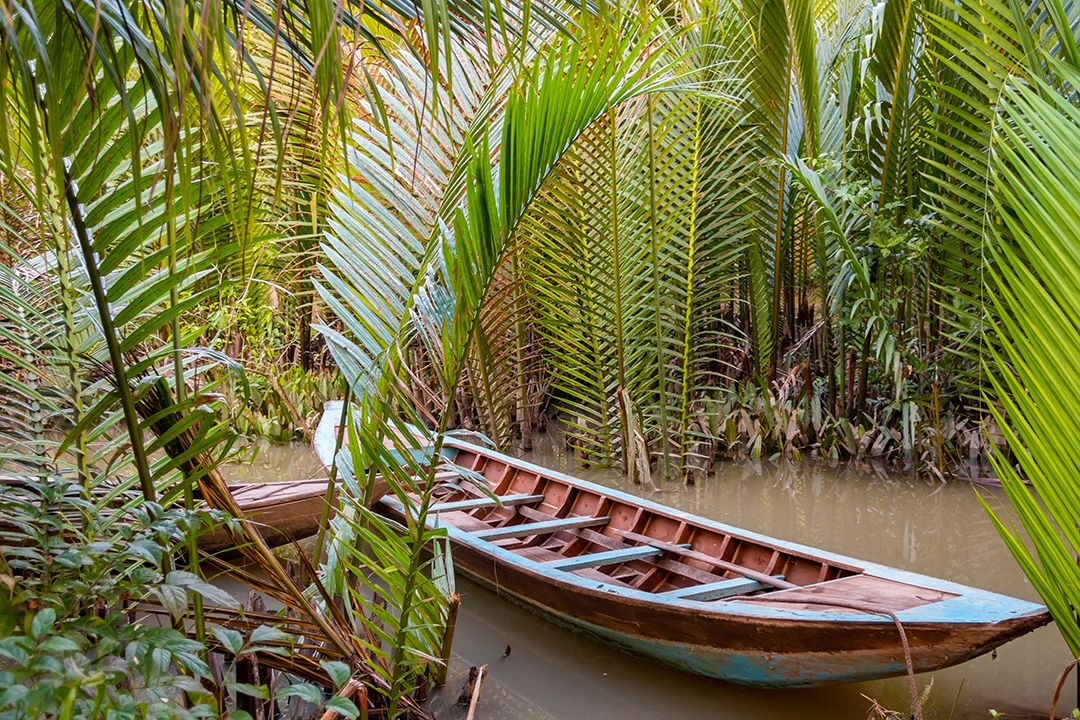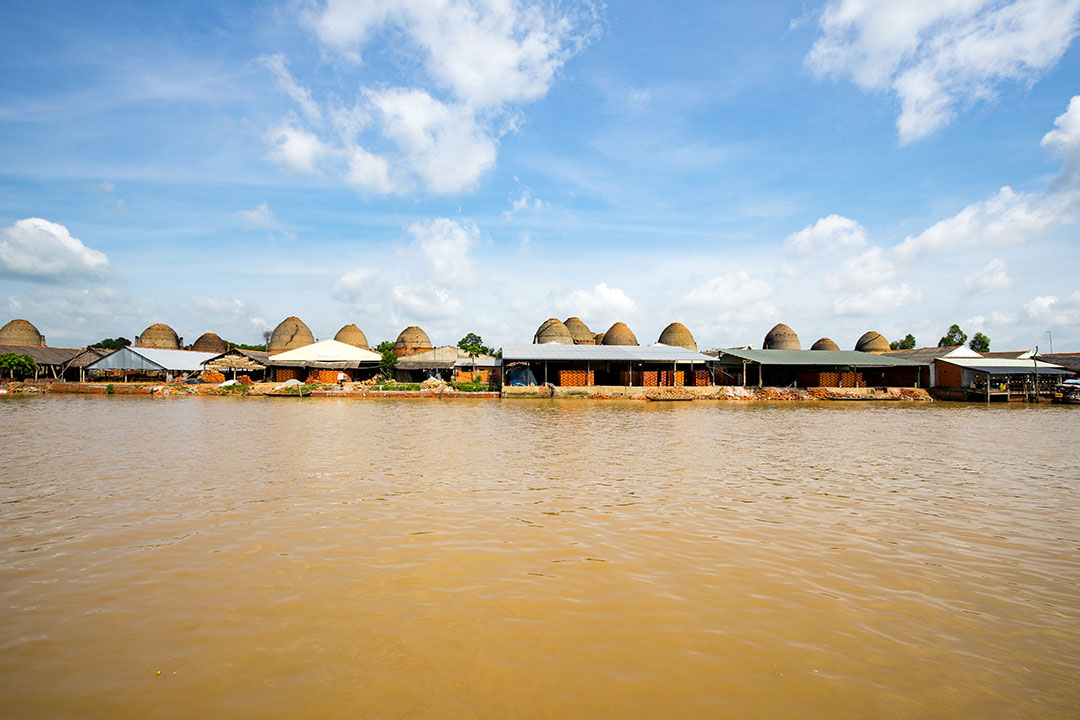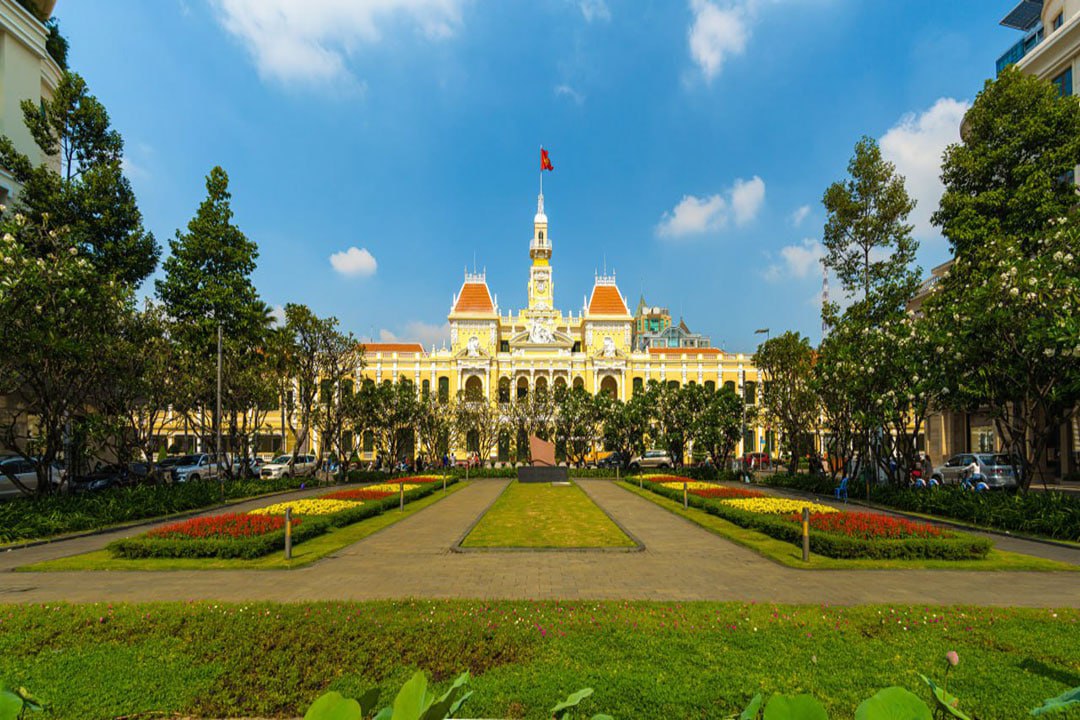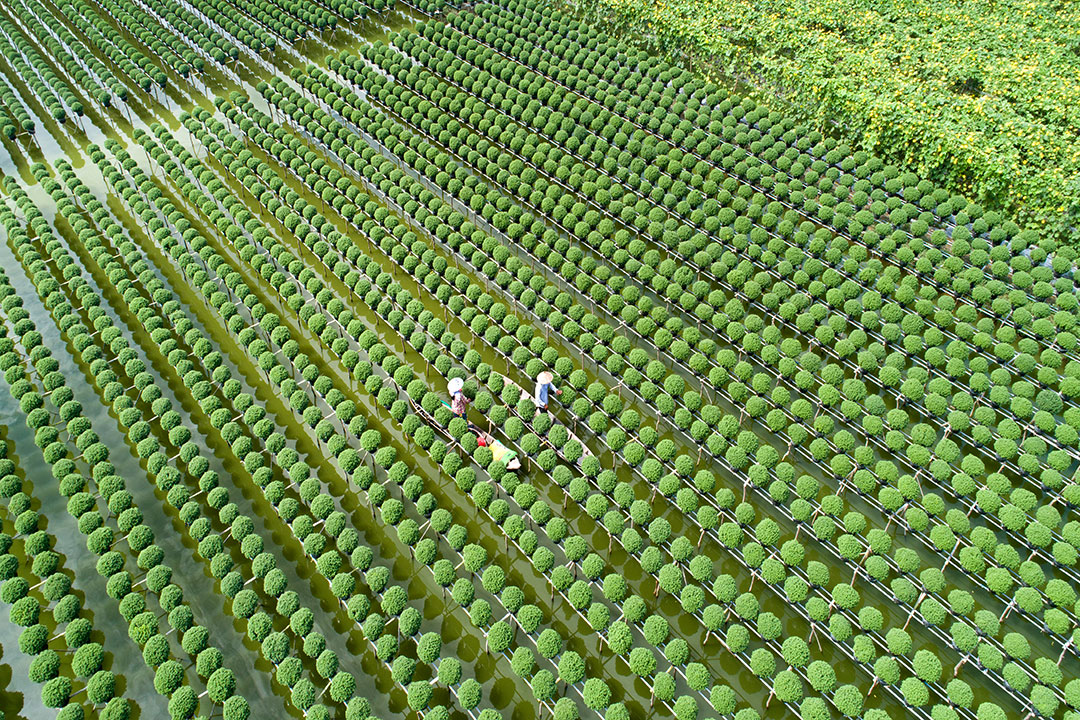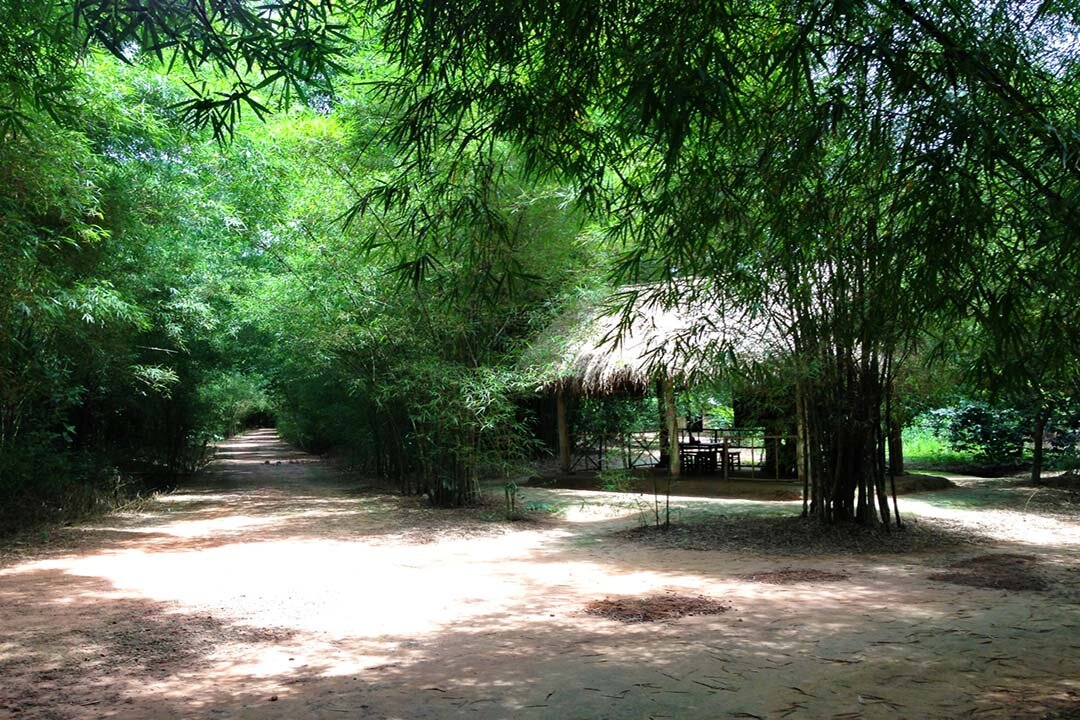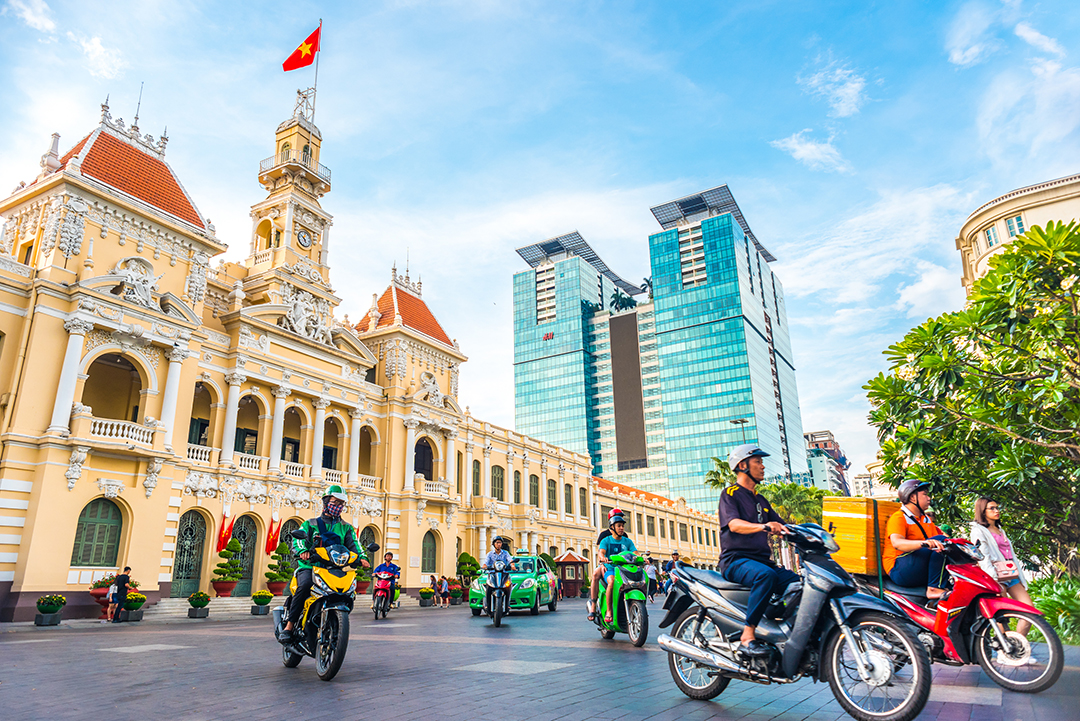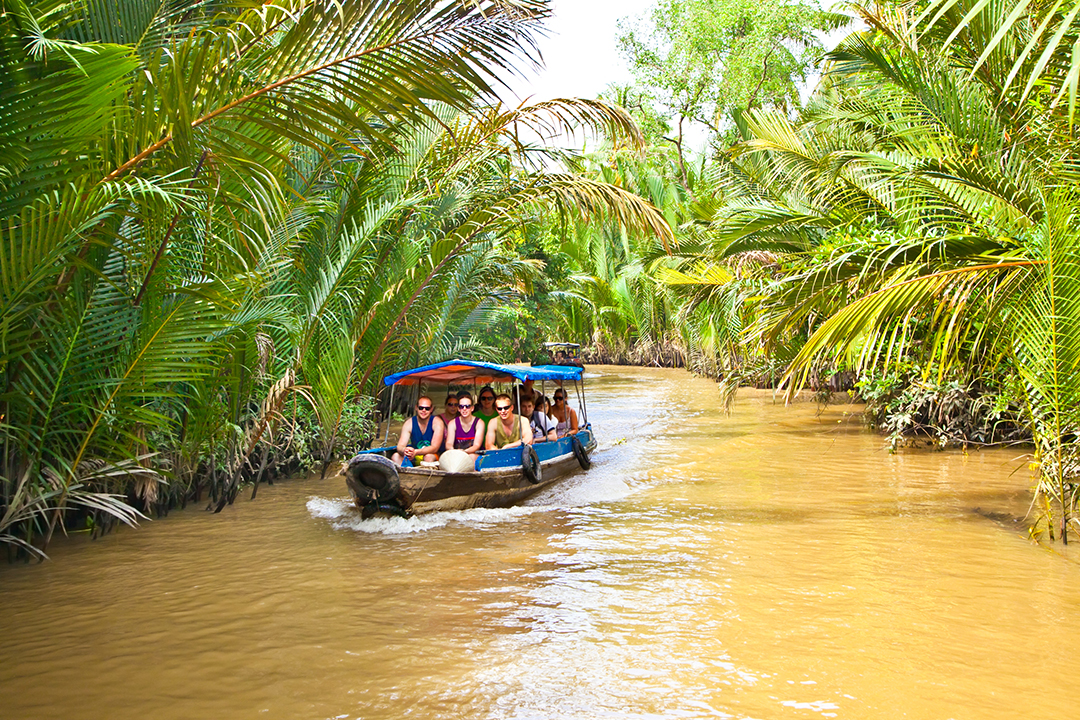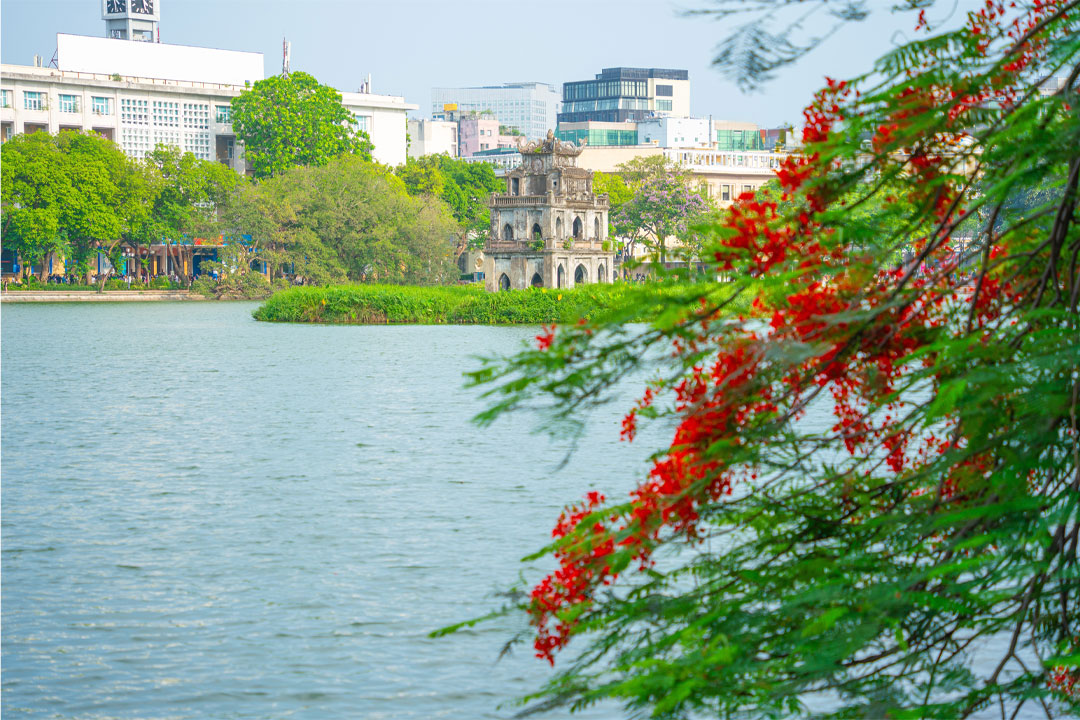Binh Thuy Ancient House: History, Architecture & Travel Guide
Binh Thuy Ancient House is more than just a well-preserved relic-it’s a portal into Vietnam’s past, where French colonial elegance meets traditional Vietnamese craftsmanship. Built in 1870 by the Duong family, this architectural gem tells the story of cultural fusion, social class, and the changing tides of history in the Mekong Delta.
But what truly sets Binh Thuy Ancient House apart? Beyond its ornate facade and antique-filled halls, this house has been a silent witness to generations of societal shifts, serving as both a family residence and a backdrop for famous Vietnamese films. From intricate floral motifs influenced by European aesthetics to sacred ancestral spaces reflecting Confucian traditions, every corner holds a narrative waiting to be uncovered.
In this article, we’ll explore the history and architecture of this national treasure. We'll also uncover its cultural significance, hidden details, and practical travel insights ensuring you see beyond the tourist lens. What secrets lie behind its century-old wooden doors? Let’s step inside.
Overview of Binh Thuy Ancient House
Located at 144 Bui Huu Nghia Street, Binh Thuy Ward, Can Tho City, Binh Thuy Ancient House is a remarkable historical site. It sits about 10 km from the city center and showcases a unique blend of French colonial architecture and traditional Vietnamese design. Originally a wooden house from 1870, it was renovated from 1904 to 1911 by Mr. Duong Chan Ky, a wealthy merchant and cultural enthusiast. In 2009, it was officially recognized as a National Historic Site. Spanning 8,000 square meters, the house is an architectural masterpiece and a valuable cultural relic, reflecting the lifestyle of affluent Vietnamese families in the early 20th century.
The architectural charm of Binh Thuy Ancient House lies in its harmonious fusion of East and West. The exterior features French colonial influences, including arched windows, intricate ironwork, and a symmetrical layout. Meanwhile, the interior embraces Vietnamese traditions, with ornate wooden carvings, antique furniture, and dedicated altars for ancestral worship. This seamless integration of two cultures makes the house a rare and well-preserved example of Vietnam’s colonial past.
Beyond its architectural appeal, Binh Thuy Ancient House holds a special place in Vietnam’s cultural heritage. It remains under the care of the Duong family, with Mr. Duong Van Ngon, a fifth-generation descendant, overseeing its preservation. Recognized as a national-level artistic relic, the house has been featured in various films. Most notably, The Lover (1992), The Water Fern Way (1995), The Beauty of the West (1996), and Life Debt (2004) brought international attention to its timeless beauty.
Today, Binh Thuy Ancient House continues to attract history enthusiasts, architecture lovers, and cultural explorers eager to experience a piece of Vietnam’s colonial-era legacy. It stands as a testament to Can Tho’s rich history, offering visitors a glimpse into a bygone era while preserving the traditions and craftsmanship of the past.
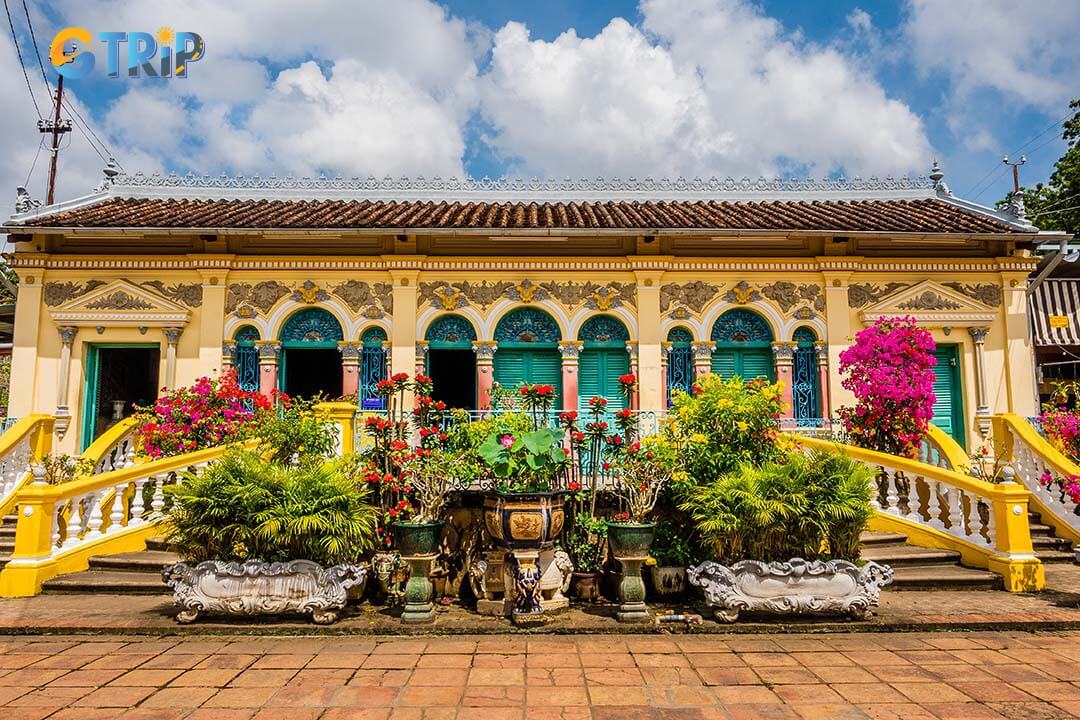
Binh Thuy Ancient House is a beautifully preserved historical site in Can Tho, blending French colonial elegance with traditional Vietnamese charm
The harmonious architecture of Binh Thuy Ancient House
Spanning 8,000 square meters, the ancient house is built in an east-west orientation and surrounded by lush ornamental gardens and fruit trees, creating a serene and refreshing atmosphere. The estate is enclosed by an imported wrought-iron fence, designed with open slats to offer passersby a clear view of the house. Behind the iron gate stands a traditional 3-entrance gate supported by four large burma ironwood wooden pillars. The roof, adorned with glazed yin-yang tiles, features intricate ridge decorations, including apricot blossoms, birds, and the 4 Sacred Animals (Dragon, Qilin, Turtle, and Phoenix). In front of the house, a striking black lava rock miniature mountain reflects the owner's refined taste. Meanwhile, a charming four-sided pavilion nestles within the garden, blending harmoniously with ancient bonsai trees and flowering plants. At each corner of the courtyard, elegant French-style iron lamp posts further enhance the estate’s sophisticated charm.
The spacious courtyard, paved with tiles, leads to a gracefully curved three-step entrance. The facade is embellished with intricate bas-reliefs and wrought-iron floral designs, giving the wooden shutters a lively character. The reliefs, featuring squirrels among grapevines and hibiscus flowers entwined with creeping plants, harmonize beautifully with the greenery around the house. The earthy ochre tones of the carvings contrast elegantly with the verdant shutters, creating an unexpected yet refined aesthetic.
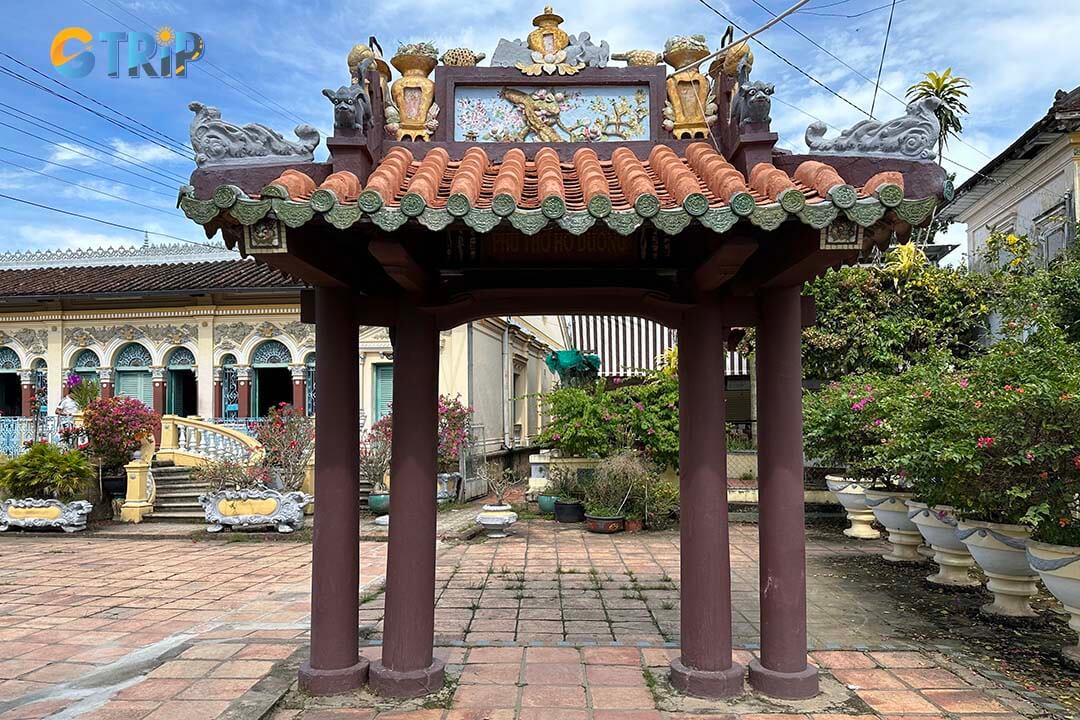
Binh Thuy Ancient House spans 8,000 square meters, featuring lush gardens, intricate French-Vietnamese architecture, and exquisite ornamental details
Built in the traditional Southern Vietnamese style, the house consists of three sections: the front hall, the middle hall, and the rear section, meticulously crafted by skilled artisans from Central and Northern Vietnam.
- Front Hall: This 5-room space, primarily used for receiving guests on formal occasions, showcases European influences. It features imported French encaustic floor tiles, intricately decorated ceilings, and Western-style chandeliers. The furniture, including wooden tables and chairs, follows the Louis XV design. Among the rare artefacts in this section are a French ceramic washbasin and a vintage phonograph. A portrait of Duong Chan Ky, the house’s principal builder, is prominently displayed. The ceramic-enameled portrait, inscribed with Chinese characters, exemplifies a once-popular technique in France and China during the late 18th century.
- Middle Hall: Separated from the front hall by exquisitely carved wooden panels and balustrades, the middle hall comprises five rooms. The central three rooms serve as the ancestral worship area, furnished with mother-of-pearl-inlaid wooden altars, incense tables, and ancestral tablets in a traditional Vietnamese arrangement. The two outer rooms are living spaces, partitioned by decorative wooden cabinets that function as both ornaments and room dividers.
- Rear Section: Used for hosting female guests, the rear hall mirrors the front hall in architectural design. A long wooden partition, adorned with ceramic reliefs and ornate carvings, stretches from floor to ceiling, reinforcing the home’s artistic grandeur.
The house’s structural framework rests on 24 large burma ironwood and hopea odorata wooden columns, arranged in a 4x6 grid (excluding the wall pillars). These columns, measuring between 4 and 6 meters in height, stand atop stone pedestals. Their diameters vary, with the veranda columns at 28 cm, the main columns at 31 cm, and the intermediary columns at 29.3 cm. The roof structure follows the traditional Southern Vietnamese beam system, known as "bat-wing truss" or "bat-wing beam" trusses, ensuring durability and aesthetic balance.
The harmonious blend of East and West is evident in the house’s design. While the reception area reflects European elegance, the most sacred space the ancestral altar remains distinctly Vietnamese. This fusion of cultures demonstrates the owner’s sophisticated taste, embracing modern influences while preserving traditional values. Adding to its historical value, the house still retains a collection of rare antiques, such as:
- Two sets of Chinese rosewood furniture from Yunnan, featuring marble tabletops 1.5 meters in diameter and 6 cm thick.
- A French Louis XV-style salon set with a blue marble table.
- Four 18th-century French oil-burning street lamps, each over 3 meters tall.
- Ming and Qing Dynasty porcelain tea sets, including a Tung Dinh tea set and a Ngu Lieu set.
- A Tuyen Duc porcelain cup, crafted 572 years ago.
- A pair of Thanh Hoa luc vases from 1465.
These invaluable heirlooms, along with the house’s well-preserved architectural beauty, continue to captivate visitors, researchers, and cultural enthusiasts. They serve as a testament to the family's legacy, reflecting the rich history and refined taste of past generations.

The house harmonizes Southern Vietnamese and European styles, featuring intricate carvings, antique furniture, and rare heirlooms
Things to do when visiting Binh Thuy Ancient House
Binh Thuy Ancient House is an architectural masterpiece and a place that preserves fascinating legends and invaluable historical treasures. When visiting, you can admire its architectural beauty, uncover intriguing stories, and capture stunning check-in photos. Let’s explore these experiences in more detail.
1. Admire the architecture of Binh Thuy Ancient House
One of the main highlights of Binh Thuy Ancient House is its unique blend of Eastern and Western architectural styles. Built in the late 19th century, the house features intricate carvings, French-style interiors, and a traditional Vietnamese altar arrangement. The architecture reflects the Southern Vietnamese style, featuring a front house for guests, a middle house for ancestor worship, and a back house for daily living.
Upon passing through the elegant iron gate imported from France, you will encounter a meticulously carved wooden 3-entrance gate with glazed tile roofing. The house features carved wooden columns, intricate bas-reliefs, and antiques like a century-old tea set and European chandeliers. Every corner of the house reflects the refined aesthetic and deep cultural heritage of its owner.
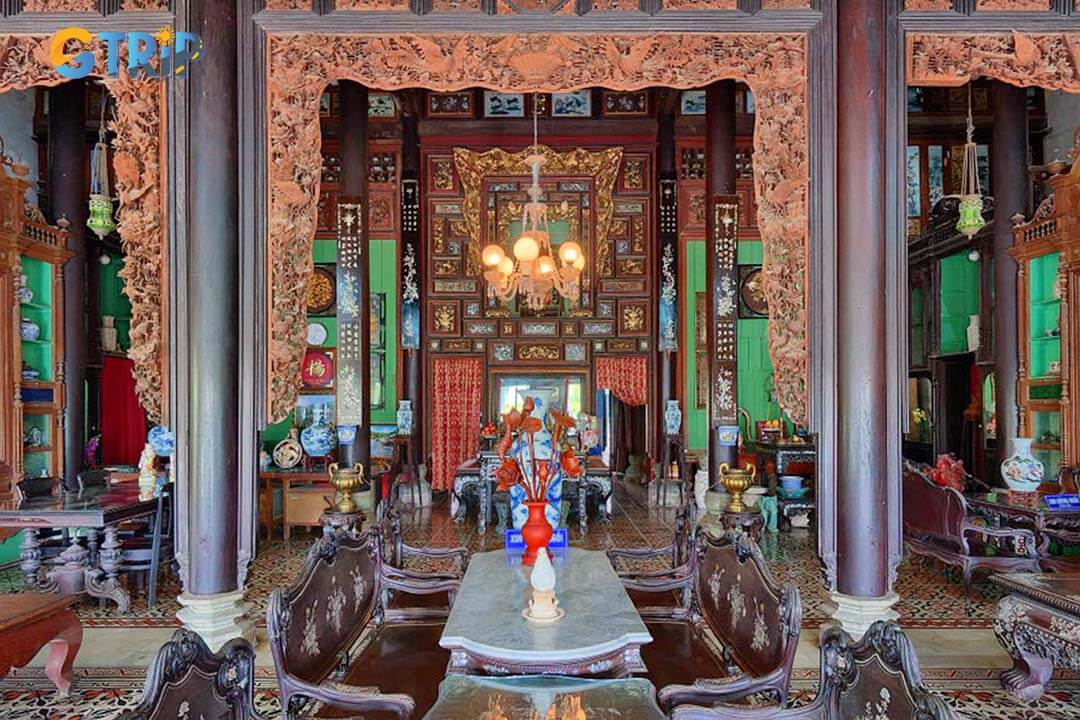
A stunning blend of Southern Vietnamese and European architecture, adorned with intricate carvings, antique furniture, and rare heirlooms
2. Intriguing Legends of Binh Thuy Ancient House
A visit to Binh Thuy Ancient House would be incomplete without hearing the captivating legends associated with this place. Like many other famous ancient houses in the Mekong Delta, such as the Huynh Thuy Le Ancient House (Dong Thap) or the Cai Cuong Ancient House (Vinh Long), Binh Thuy Ancient House is steeped in fascinating stories.
The agreement between Duong Chan Ky and Master Ba Nghia (Master Lo Ban)
One of the most intriguing tales is the agreement between the house’s owner, Duong Chan Ky, and a feng shui master named Ba Nghia, also known as Lo Ban. According to legend, the rapid prosperity of the Duong family was linked to a hidden Lo Ban talisman placed somewhere within the house.
When discussing the house’s construction, Duong Chan Ky made a unique request: “Build me a magnificent house, but more importantly, I must become wealthy after it’s completed”. Master Ba Nghia hesitated and replied, “Building a beautiful house for you is easy, but in this trade, if the owner prospers, I will suffer misfortune”. To reassure him, Duong Chan Ky promised to provide him with rice and silver every month for the rest of his life. While the authenticity of this story remains a mystery, the rapid wealth of the Duong family is undeniable.
The longest elephant tusks in Vietnam
Among the many treasures in Binh Thuy Ancient House, the most remarkable is a pair of elephant tusks believed to be the longest in Vietnam. The story behind them is equally extraordinary.
Duong Chan Ky purchased these tusks in Saigon after being looked down upon by a French shop owner. While visiting an animal specimen store on Catinat Street (now Dong Khoi Street), the shop owner rudely remarked, “Old man, this is not a place for you. If you scratch them, even selling your entire fortune wouldn’t be enough to compensate”. Calmly, Ky asked for the price, placed a large deposit, and returned to Can Tho before coming back with 4,000 Indochinese silver coins to buy the tusks outright. News of this transaction quickly spread, even reaching the Bac Lieu playboy’s family, who later offered to buy them at double the price, but Ky firmly refused to sell.
The story behind the seven stone benches
Another lesser-known story is tied to the historical events of 1945 when French colonial forces reoccupied Vietnam. In a fierce battle in Can Tho, seven Vietnamese soldiers heroically sacrificed their lives in an ambush against the French.
To honor their bravery, Duong Van Ngon, a descendant of the Duong family, had seven stone benches built in the front yard of the ancient house. Today, visitors to Binh Thuy Ancient House can see these benches and appreciate their deep historical significance, symbolizing patriotism and resilience.
3. Capture stunning check-in photos
Binh Thuy Ancient House is an ideal destination for photography enthusiasts. Its vintage ambiance, blending European interiors with traditional Vietnamese architecture, creates breathtaking photo opportunities.
The best photo spots include:
- The entrance gate with French-style iron railings
- Intricately carved wooden panels and antique furnishings inside the house
- The volcanic rock miniature mountain and lush garden
- The historically significant stone benches
Whether you are a history lover or simply want to explore the beauty of ancient architecture, Binh Thuy Ancient House promises an unforgettable experience. Take your time to appreciate, discover, and capture the wonderful moments of your visit.
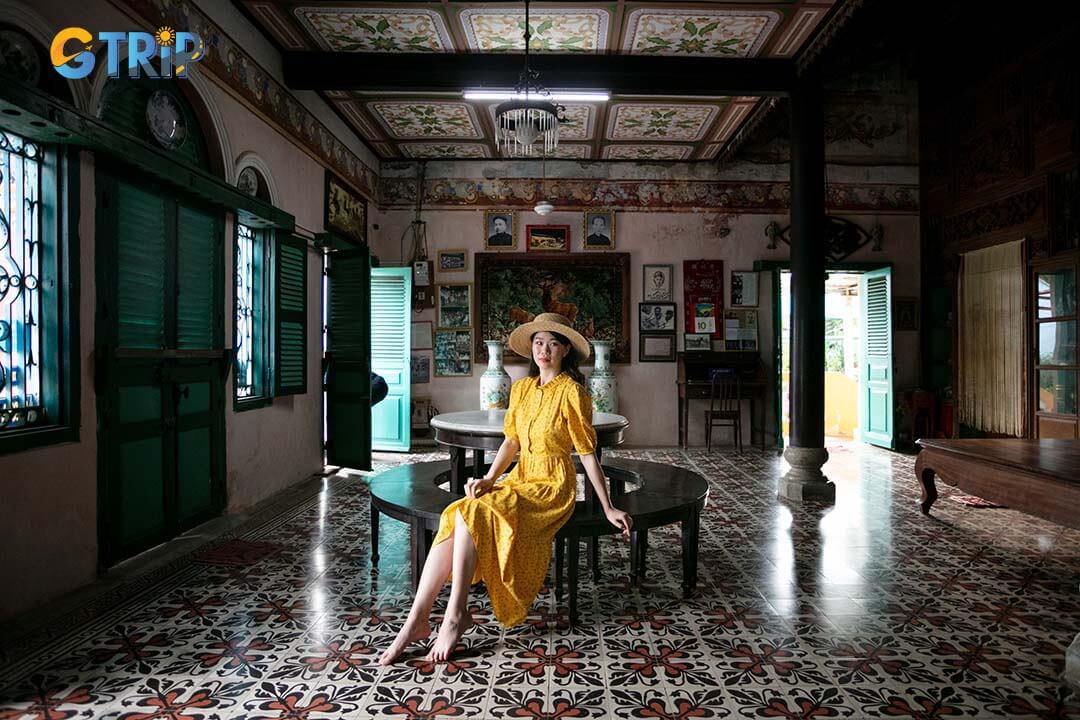
A perfect spot for photography, Binh Thuy Ancient House offers a timeless blend of European elegance and Vietnamese heritage
Entrance fee and opening hours for Binh Thuy Ancient House
Binh Thuy Ancient House is open to visitors who wish to explore its rich architectural heritage and historical significance. The entrance fee is 15,000 VND per person, making it an affordable yet valuable cultural experience. The house is open daily from 7:30 AM to 12:00 PM and 1:30 PM to 5:30 PM, allowing visitors ample time to admire its unique blend of French colonial and Vietnamese traditional design. It is recommended to visit during the morning or late afternoon to avoid peak hours and fully appreciate the tranquil atmosphere of the house and its beautiful garden. If you arrive during these time slots but find the house closed or no one selling tickets, you can contact the Binh Thuy Ancient House in Can Tho at 0987 055 963 (Mr. Bay - the owner), and he will come right away.
How to get to Binh Thuy Ancient House?
Below is a detailed visitor’s guide, covering location, directions, fees, and important guidelines to help you make the most of your trip.
From Can Tho City Center
Binh Thuy Ancient House is situated at 144 Bui Huu Nghia Street, Binh Thuy Ward, Can Tho City. The house is a short distance from Ninh Kieu Wharf and other central attractions, making it an easily accessible destination for both local and international visitors.
| Transport Mode | Duration | Estimated Cost | Details |
|---|---|---|---|
| Taxi/Ride-hailing (Grab, XanhSM) | 15 mins | VND 80,000 - 120,000 | Convenient and comfortable option for tourists |
| Motorbike Rental | 15-20 mins | VND 100,000 - 150,000/day | Flexible option for independent travelers |
| Public Bus (Route 28) | 25 mins | VND 10,000 - 20,000 | Budget-friendly but limited schedule |
| Cycling | 30-40 mins | Free if renting from hotel | Ideal for eco-friendly travelers |
From Ho Chi Minh City
If you’re traveling from Ho Chi Minh City to Binh Thuy Ancient House, there are several convenient transportation options, depending on your budget and preferred travel style. The distance between Ho Chi Minh City and Can Tho is approximately 170 km, and the journey typically takes 3.5 to 4 hours by road.
1. By bus
Taking a sleeper or express bus is the most common way to travel from Ho Chi Minh City to Can Tho. Several reputable bus companies operate daily routes between these two cities.
- Bus operators: Phuong Trang (Futa Bus Lines), Vũ Linh limousine
- Departure location: Mien Tay Bus Station (395 Kinh Duong Vuong, Binh Tan District, HCMC)
- Travel Time: 3.5 to 4.5 hours (depending on traffic)
- Ticket Price: 150,000 - 250,000 VND (6-10 USD) per person
- Drop-off Point: Can Tho Bus Station
- How to Continue to Binh Thuy Ancient House:
- Take a taxi or Grab (15-20 minutes, around 80,000 - 120,000 VND)
- Rent a motorbike at the bus station or in Can Tho city center (100,000 - 150,000 VND /day)

Taking a sleeper or express bus is the most convenient and budget-friendly way to travel from Ho Chi Minh City to Can Tho
2. By private car or taxi
For a more flexible and comfortable journey, you can choose a private car hire or taxi service.
- Travel time: ~3.5 hours (via National Highway 1A)
- Cost:
- Taxi: Around 2,000,000 - 2,500,000 VND (80-100 USD) for a one-way trip
- Private car rental: 2,000,000 - 3,500,000 VND (80-140 USD) per day, depending on vehicle type
- Advantages: Direct, convenient, and ideal for families or small groups
3. By flight
For those seeking the fastest travel option, Vietnam Airlines and Vietjet Air operate daily flights from Tan Son Nhat Airport (SGN) in Ho Chi Minh City to Can Tho Airport (VCA).
- Flight duration: 45 minutes
- Ticket price: 900,000 - 1,500,000 VND (35-60 USD) (one-way, depending on booking time)
- Distance from Can Tho Airport to Binh Thuy Ancient House: Only 5 km (~10-minute taxi ride, ~50,000 VND )
4. By motorbike
If you're an adventure seeker, riding a motorbike from Ho Chi Minh City to Can Tho can be an exciting experience. The journey follows National Highway 1A, passing through Tien Giang, Vinh Long, and My Tho, offering stunning views of the Mekong Delta.
- Travel Time: ~4.5 to 5 hours (including rest stops)
- Recommended Route: Ho Chi Minh City → My Tho → Vinh Long → Can Tho
- Motorbike rental cost: 200,000 - 300,000 VND/day (8-12 USD)
- Important tips: Wear a helmet, check the weather forecast, and take breaks at roadside rest stops.
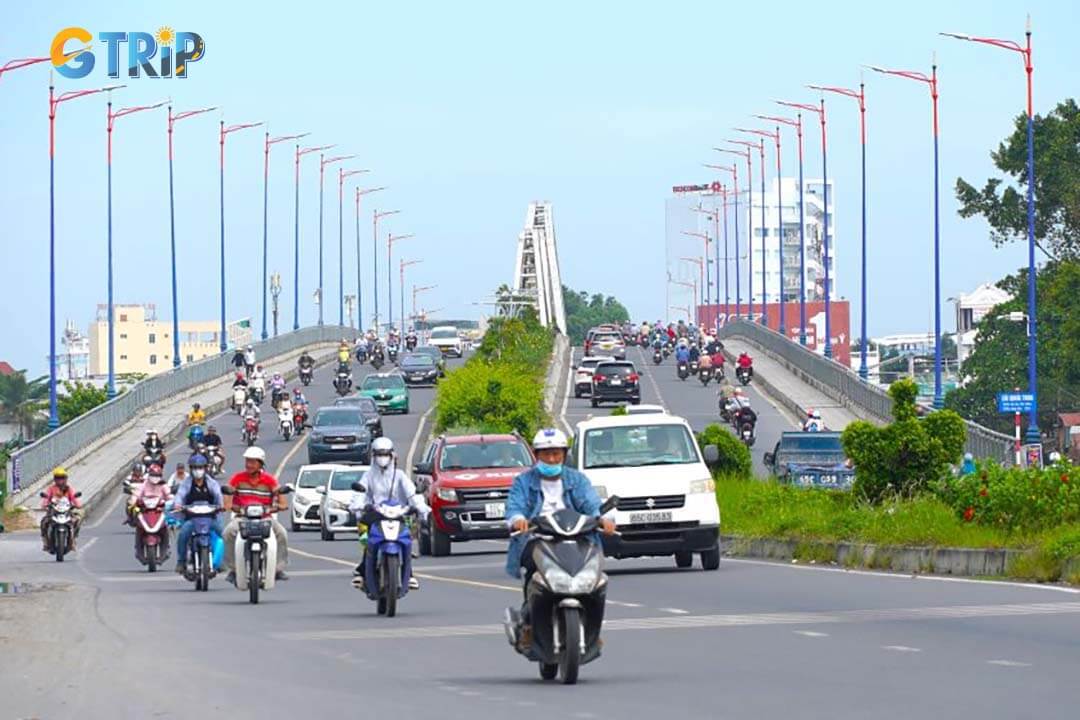
For adventure seekers, a motorbike trip from Ho Chi Minh City to Can Tho offers a scenic ride through the Mekong Delta, passing My Tho, Vinh Long, and Tien Giang
With these options, you can choose the best way to travel from Ho Chi Minh City to Binh Thuy Ancient House based on your budget, comfort, and adventure preferences. If you prefer speed, affordability, or scenic routes, there's a perfect travel option to suit your journey.
Visitor guidelines: dos & don’ts when exploring the house
To preserve the historical and architectural integrity of Binh Thuy Ancient House, visitors must adhere to certain rules and etiquette.
Dos: Essential visitor etiquette
By following these guidelines, you can fully appreciate the charm of Binh Thuy Ancient House while preserving its historical integrity. Enhance your visit by exploring nearby cultural landmarks for a deeper understanding of the region's rich heritage.
- Respect the property - This is a century-old heritage site; avoid touching antique furniture or decorations.
- Dress modestly - The house has spiritual significance; avoid wearing overly revealing outfits.
- Ask for permission before taking photos - Some areas may have restrictions, especially family-occupied sections.
- Hire a local guide - They offer authentic insights into the house’s history, architecture, and cultural significance.
- Explore nearby attractions - Consider visiting Nam Nha Pagoda and Cai Rang Floating Market for a complete cultural experience.
Don’ts: Common mistakes to avoid
When visiting Binh Thuy Ancient House, it's essential to respect its historical and cultural significance. Here are some important guidelines to ensure a meaningful and responsible experience:
- Avoid loud noises - This is a quiet heritage site, not a typical tourist attraction.
- Do not bring food or drinks inside - To maintain cleanliness and avoid damage to antiques.
- No smoking - Strictly prohibited inside the premises.
- Refrain from climbing on furniture or structures - These are fragile, historical pieces.
- Do not remove or relocate artifacts - Many items have historical and sentimental value.

Visitors are required to follow guidelines to help preserve the historical and architectural integrity of Binh Thuy Ancient House
Nearby attractions to explore in Can Tho
Binh Thuy Ancient House is part of Can Tho’s rich cultural landscape. Nearby attractions like Tuyen Ancient Village, Nam Nha Pagoda, and Cai Rang Floating Market offer a deeper dive into the city's history, architecture, and riverine lifestyle.
Nam Nha Pagoda (2 km)
Nam Nha Pagoda is located at 612 Cach Mang Thang 8 Street, Bui Huu Nghia, Binh Thuy, Can Tho. It is a serene Buddhist temple with deep revolutionary significance. Built in 1895, this pagoda is more than just a religious site-it played an important role in Vietnam’s anti-colonial resistance movement during the early 20th century.
Key features of Nam Nha Pagoda:
- Architectural beauty: A fusion of Vietnamese-Buddhist and French influences, featuring traditional curved roofs, dragon motifs, and symmetrical courtyard gardens.
- Historical importance: The pagoda served as a meeting point for patriotic scholars and revolutionaries fighting against French colonial rule.
- Peaceful atmosphere: Unlike the more tourist-heavy attractions, Nam Nha offers a quiet retreat, ideal for meditation and reflection.
- Riverside location: Situated on the banks of the Hau River, the pagoda provides stunning views, making it an excellent spot for sunset photography.
Long Tuyen Ancient Village (8.5 km)
Located within Binh Thuy District, Long Tuyen Ancient Village is an architectural and cultural time capsule that showcases the evolution of southern Vietnam's society over the past centuries. This village is a living museum, showcasing French colonial villas, Southern Vietnamese houses, and ornate temples that shaped the Mekong Delta.
Key features of Long Tuyen Ancient Village:
- Architectural heritage: The village houses various 19th and early 20th-century structures, including wooden homes adorned with intricate carvings, French-style mansions, and Chinese-influenced pagodas.
- Duong family influence: As the original settlers, the Duong family played a crucial role in shaping the village’s identity, much like their contributions to Binh Thuy Ancient House.
- Cultural festivals: Throughout the year, the village hosts traditional Mekong Delta festivals, featuring folk music (Don Ca Tai Tu), local performances, and religious ceremonies.
- Scenic canals & gardens: The area is surrounded by lush gardens and small canals, offering visitors a peaceful escape from Can Tho’s urban bustle.
Cai Rang Floating Market (14.9 km)
Cai Rang Floating Market, one of Vietnam’s largest and most famous floating markets. This bustling marketplace, located about 6 km from Binh Thuy Ancient House, showcases the dynamic river culture of the Mekong Delta.
Key features of Cai Rang Floating Market
- Authentic Mekong Delta trade: Unlike land-based markets, Cai Rang is a maze of boats, where traders sell fresh produce, noodles, seafood, and household goods directly from their boats.
- Early morning vibrance: The market starts before sunrise, around 5:30 AM - 6:00 AM, creating a lively, colorful spectacle of floating vendors and food boats.
- Signature local dishes: You can enjoy a bowl of Hu Tieu (noodle soup), Banh Mi (Vietnamese sandwich), and freshly squeezed sugarcane juice, all served from floating kitchens.
- Photography & cultural insights: The bustling energy, fruit-laden boats, and traditional Mekong wooden vessels make it a photographer’s paradise and a living example of the region’s waterborne economy.
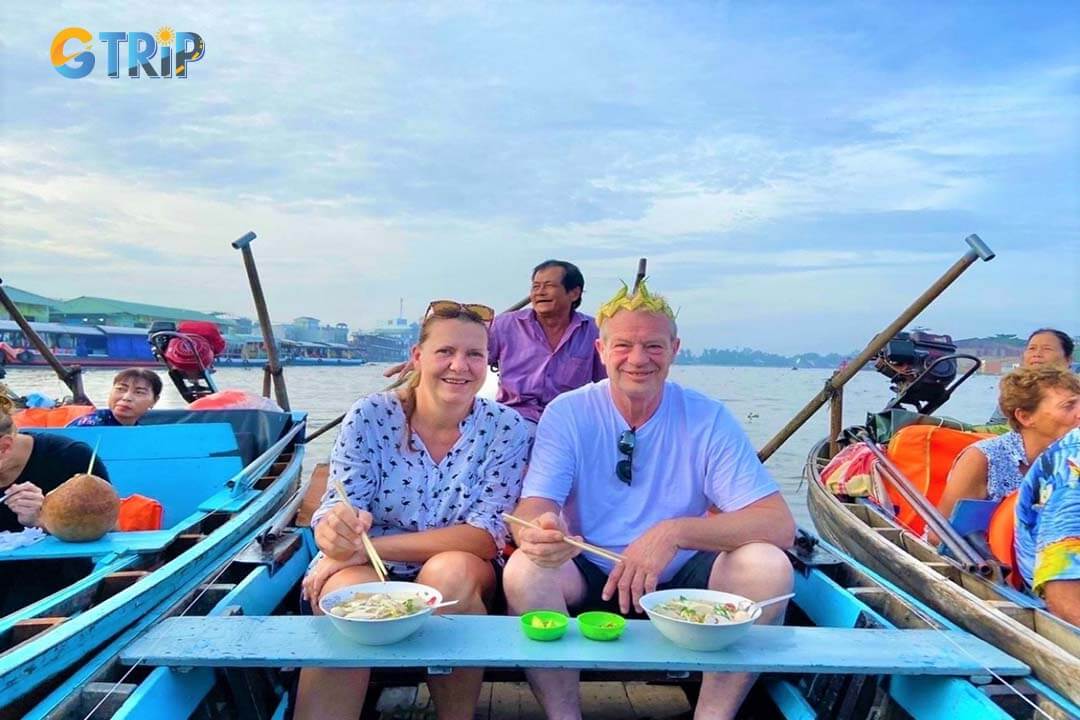
Cai Rang Floating Market is a vibrant hub of Mekong Delta culture, where boats brim with fresh produce, local delicacies, and the lively spirit of riverine trade
Frequently asked questions about Binh Thuy Ancient House
Binh Thuy Ancient House, a well-preserved historical landmark in Can Tho, attracts many visitors interested in its architectural beauty and cultural significance. Below are some frequently asked questions to help visitors plan their trip and understand what to expect.
Are there guided tours available in English?
Yes, guided tours in English are available, but they require prior arrangement. Unlike popular tourist sites in Ho Chi Minh City, Can Tho’s heritage sites, including Binh Thuy Ancient House, have fewer full-time English-speaking guides.
- Pre-arranged private tours
- Many local tour operators offer customized visits with English-speaking guides.
- Ideal for in-depth historical insights.
- Hotel & travel agencies in Can Tho
- Some hotels and travel agencies in Can Tho can arrange English-speaking guides upon request.
- Booking in advance is recommended.
- Self-guided tours with information panels
- The house has information boards in both Vietnamese and English.
- Suitable for independent travelers who prefer flexibility.
Can you take photos inside the house?
Yes, visitors can take photos inside Binh Thuy Ancient House, but there are some restrictions to preserving its artifacts and interiors.
General photography is allowed
- You can take personal photos of the architectural details and artifacts.
- Non-commercial photography is free of charge.
Restrictions to protect heritage items
- No flash photography: The house contains delicate antiques, and flash lighting can cause damage.
- No tripods or professional equipment without special permission.
Special arrangements for commercial photography
- The house has been a filming location for movies like The Lover (1992).
- Professional photoshoots (e.g., pre-wedding, documentaries) require a permit and additional fees.
You should always follow staff instructions to ensure that the site's cultural heritage remains protected. Respecting these guidelines helps preserve Binh Thuy Ancient House for future generations to appreciate.
Binh Thuy Ancient House is a glimpse into Vietnam’s heritage, blending French colonial elegance with traditional Vietnamese architecture. As one of the most remarkable heritage houses in the Mekong Delta, it tells the story of the Duong family, Can Tho’s historical evolution, and the artistic fusion that defines this region.
For those seeking an authentic cultural experience, this landmark offers a rare glimpse into the past. If you’re passionate about history, architecture, or photography, Binh Thuy Ancient House provides a setting that is as educational as it is visually captivating. If you’re planning a visit, be sure to pair it with other nearby attractions such as Nam Nha Pagoda or Cai Rang Floating Market to get a fuller picture of Can Tho’s charm.

